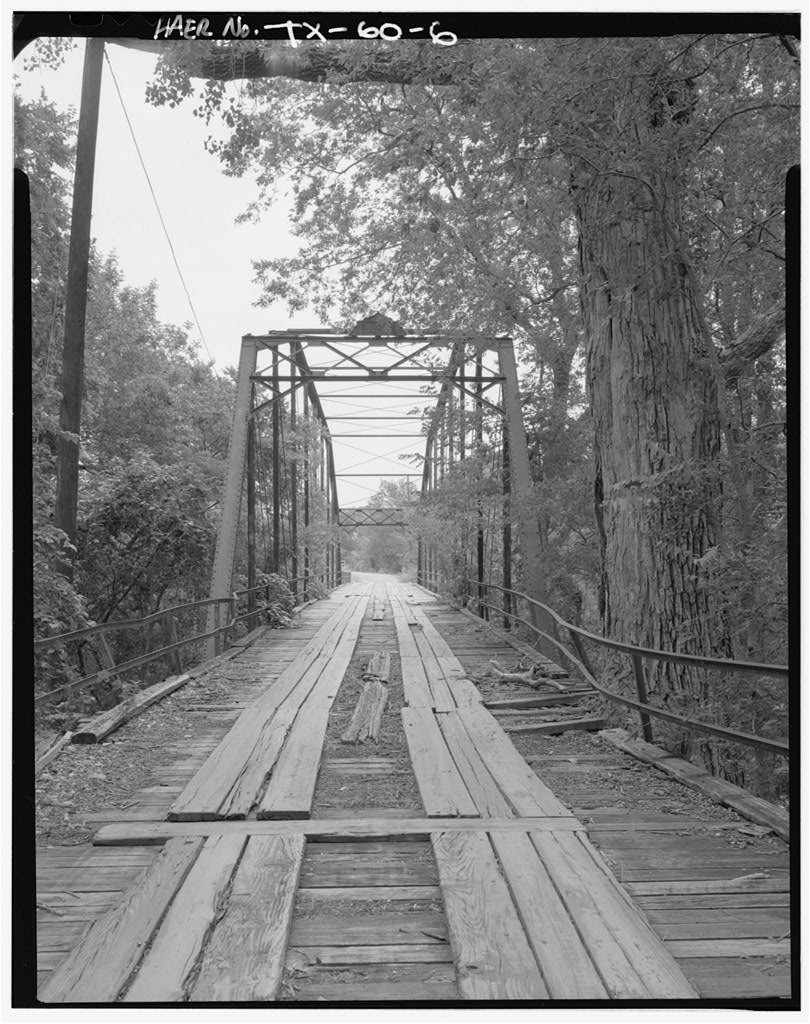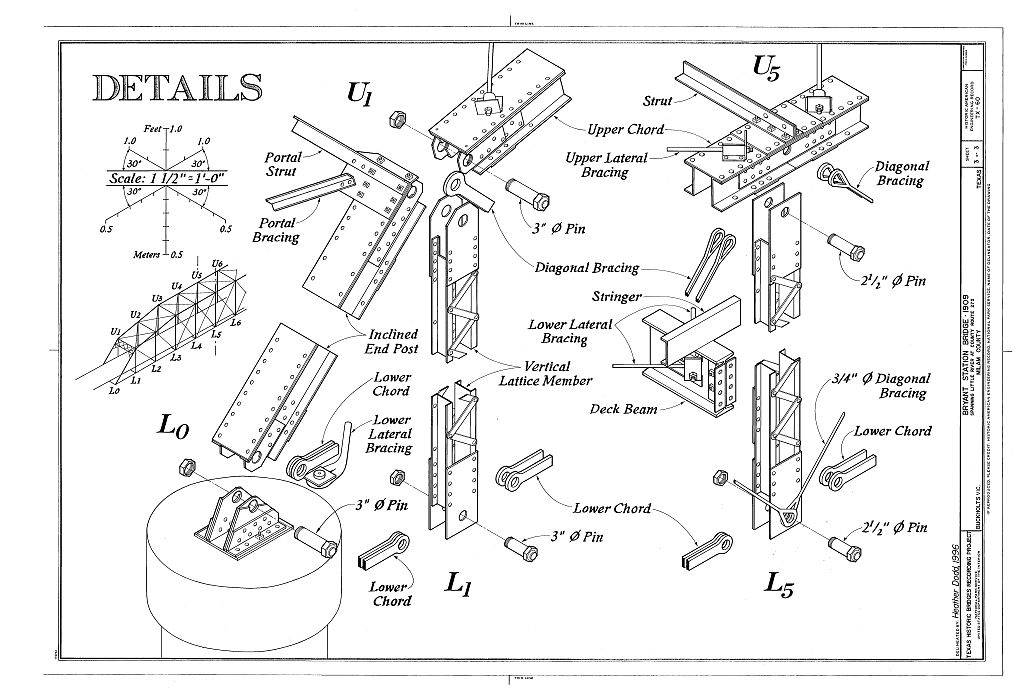Parker Trusses in Texas
Author: Melinda Luna PE
May 2023

Credit: Library of Congress Prints and Photographs Division Washington, D.C. 20540 USA http://hdl.loc.gov/loc.pnp/pp.print
Charles H. Parker was a mechanical engineer from Boston who registered a patent on Feb 22, 1870. The patent took a Pratt truss and modified the top chords to a diagonal member. Parker trusses were also referred to as Camelback trusses. The curved member makes the member lighter in weight without sacrificing strength. At the time of the patent, iron was getting cheaper, and the material offered to be more resistant than wooden trusses. While the Parker trusses offered advantages, it was also harder to build. Bridge Hunter is a website that documents historic bridges and has information on 65 Parker trusses in Texas. About half of the bridges are open to traffic or open to pedestrian traffic today. Among the Parker trusses listed, there are a few notable ones due to being one of the earliest bridges in Texas, the longest single span, and the longest length bridge of Parker trusses.
The earliest Parker truss of the 65 Parker trusses was built in 1886 for the ATSF Railroad over the Canadian River in Hemphill County. The River Valley Pioneer Museum has photos of this bridge. Newspapers mention the bridge being built, but not much information on the bridge itself. From compiling other bridge lengths, we know that the bridge was between 1,000 to 3,000 feet and had a maximum span length of 200 feet. The newspapers document floods of Canadian for 1904, 1910, 1911, 1913, 1914, 1915, and 1921. The bridge was then removed.

Wilson County Camelback Bridge, Spanning San Antonio River at Old County Route 117, Calaveras, Wilson County, TX
Credit: Library of Congress Prints and Photographs Division Washington, D.C. 20540 USA http://hdl.loc.gov/loc.pnp/pp.print
The longest span of a Parker truss was 350 feet and was built in 1905 for the Union Pacific Railroad over the Brazos River in Robertson County. Pennsylvania Steel Company supplied the steel for the truss bridge. One of the advantages of the Parker truss was that it could span longer than wooden bridges. The Parker trusses in Texas are over major rivers such as the Brazos, Sabine, Colorado, Nueces, Red, San Jacinto, Trinity, Guadalupe, Llano, and Neches Rivers.



The longest bridge made up of Parker Trusses was a 21 Parker truss bridge that was 3,255 feet with a maximum span of 155 feet in Hemphill County, US 60/83, over the Canadian River. The bridge was built by the Austin Bridge Company in 1916. This bridge is open to pedestrian traffic and still stands today. This is a long bridge, even by today’s standards.
Most of the Parker trusses on the Bridge Hunter site were built between 1920 to 1951. Many were built by Texas Highway Department (THD) to cross major rivers on THD roads during this time period. Only two Parker Pony trusses were found, and the others were Through trusses. There were several railroads and construction companies that built the Parker trusses in Texas. These contractors included Kansas City Bridge Company, Brazos River Bridge Company, Cage Brothers, King Bridge Company, and William Horace Williams Company. The most distinguished designer was Gibb Gilchrist, who designed the US 281 bridge over the Guadalupe River in Comal County in 1935.
The maximum span length was 200 feet, with an overall length of 611.9 feet. This bridge is still open to traffic today. Charles H. Parker lived between 1842 and 1897, so most of the bridges built in Texas probably never worked with any of the Texas bridges. Parker trusses were part of modernizing the bridges in Texas. The Parker trusses built between 1886 to 1951 were an average of 962 feet long and had a maximum span of 195 feet consisting of typically 2 Parker trusses. The Parker trusses were amongst the first tools that engineers and contractors used to span longer distances to avoid piers in waters ways and try to reduce the impacts of floods on bridges.



Bryant Station Bridge, Spanning Little River at County Route 275, Buckholts, Milam County, TX
Credit: Library of Congress Prints and Photographs Division Washington, D.C. 20540 USA http://hdl.loc.gov/loc.pnp/pp.print


